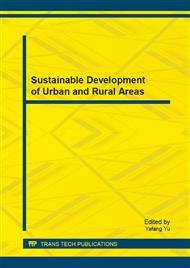[1]
BAO M T, KONG X P, SONG Y T, et al. Selective activation condition of stratal microflora of S12 block in Shengli Oilfield [J]. J Univ Pet, 2004, 06): 44-8.
Google Scholar
[2]
ZHENG C, YU L, HUANG L, et al. Investigation of a hydrocarbon-degrading strain, Rhodococcus ruber Z25, for the potential of microbial enhanced oil recovery [J]. J Pet Sci Eng, 2012, 81(49-56.
DOI: 10.1016/j.petrol.2011.12.019
Google Scholar
[3]
YAMANE K, HATTORI Y, OHTAGAKI H, et al. Microbial diversity with dominance of 16S rRNA gene sequences with high GC contents at 74 and 98 degrees C subsurface crude oil deposits in Japan [J]. FEMS Microbiol Ecol, 2011, 76(2): 220-35.
DOI: 10.1111/j.1574-6941.2011.01044.x
Google Scholar
[4]
GITTEL A, SORENSEN K B, SKOVHUS T L, et al. Prokaryotic community structure and sulfate reducer activity in water from high-temperature oil reservoirs with and without nitrate treatment [J]. Appl Environ Microbiol, 2009, 75(22): 7086-96.
DOI: 10.1128/aem.01123-09
Google Scholar
[5]
STRAPOC D, PICARDAL F W, TURICH C, et al. Methane-producing microbial community in a coal bed of the Illinois basin [J]. Appl Environ Microbiol, 2008, 74(8): 2424-32.
DOI: 10.1128/aem.02341-07
Google Scholar
[6]
YANG Z X, ZHOU Y B, XIANG X Z, et al. The Molecular Ecology Analysis of Microbial Communities in Waste Water–based Mud [J]. Pet Sci Technol, 2013, 31(9): 887-94.
Google Scholar
[7]
XIA W J, LUO Z B, DONG H P, et al. Studies of Biosurfactant for Microbial Enhanced Oil Recovery by Using Bacteria Isolated From the Formation Water of a Petroleum Reservoir [J]. Pet Sci Technol, 2013, 31(21): 2311-7.
DOI: 10.1080/10916466.2011.569812
Google Scholar
[8]
XIA W J, LUO Z B, DONG H P, et al. Synthesis, characterization, and oil recovery application of biosurfactant produced by indigenous pseudomonas aeruginosa WJ-1 using waste vegetable oils [J]. Appl Biochem Biotechnol, 2012, 166(5): 1148-66.
DOI: 10.1007/s12010-011-9501-y
Google Scholar
[9]
WATANABE K, WATANABE K, KODAMA Y, et al. Molecular characterization of bacterial populations in petroleum-contaminated groundwater discharged from underground crude oil storage cavities [J]. Appl Environ Microbiol, 2000, 66(11): 4803-9.
DOI: 10.1128/aem.66.11.4803-4809.2000
Google Scholar
[10]
MUELLER R F, NIELSEN P H. Characterization of thermophilic consortia from two souring oil reservoirs [J]. Appl Environ Microbiol, 1996, 62(9): 3083-7.
DOI: 10.1128/aem.62.9.3083-3087.1996
Google Scholar


